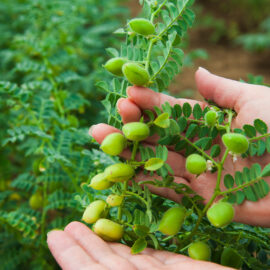With a variety of sweeteners being widely present in foods, the role of non-nutritive sweeteners in weight management has been a controversial topic and point of research in recent years. It’s no secret that sweeteners typically contain calories and are used to enhance the flavor and sometimes the texture of food. Conversely, non-nutritive sweeteners (NNS), some of which are also known as artificial sweeteners (AS) and high-intensity sweeteners (HIS), provide little to no calories. Here is a look at the role sweeteners play in weight management.
Sweeter Than Sugar
Although sugar substitutes have been around for over 140 years, the last two decades have seen a dramatic uptick in the types of sweeteners available and the variety of foods where they can be found. Consumer interest in non-nutritive sweeteners can be divided into two groups: those looking to avoid health issues associated with a high intake of sugar and those who are obese, have diabetes or heart disease, and are looking to improve their choices to manage their health.1
Some non-nutritive sweeteners are described as being hundreds of times sweeter than table sugar, so a little goes a long way to help sweeten certain foods. But besides flavor, do these sweeteners have a role in helping with weight management?
With the increased interest in reducing sugar intake, non-nutritive sweeteners have become increasingly popular. They can help reduce the intake of calories from added sugars and reduce overall calorie intake, and hundreds of studies have examined their effectiveness in weight management.2,3
Non-Nutritive Sweeteners Along with a Healthy Diet and Lifestyle Can Help Manage Weight
A recent review noted that associations found between artificial sweeteners and obesity could be explained by an increase in artificial sweeteners intake to compensate for a poor diet.4 For example, if choosing a diet soda with a high-calorie fast food meal, the artificial sweeteners in the diet soda does not remedy the overall choices of the meal.
Some research shows that non-nutritive sweeteners cannot assist with weight management when the individual is not cognitively engaged in weight loss. Furthermore, there are discrepancies in observational and interventional studies about how non-nutritive sweeteners can play a role in managing weight. Some trials can be limited by highly controlled environments that do not reflect day-to-day dietary habits. When non-nutritive sweeteners are substituted for added sugars and included as a part of a healthy diet and lifestyle, they can help people limit energy intake and contribute to weight management.5
Consideration of glycemic index (GI) of a sweetener and glycemic load (GL) of the diet might help people make better sweetener choices for weight management.
The Glycemic Index and Weight Management
GI ranks carbohydrate-containing foods according to their blood glucose raising potential. These foods can be classified as high (≥70), moderate (56-69), or low (≤55) when compared to pure glucose, which has a GI of 100. The GL is determined by multiplying the quality of carbohydrate (GI) in a food by the amount of carbohydrate in that food. Several interventional studies have examined the effects of low GI/GL diets in reducing body weight and found they were as effective as low-fat diets. Overall, a diet rich in foods such as legumes, fruit, nuts, whole grains, and non-starchy vegetables can lower GL, adding credence to the importance of consuming a healthful diet along with low-GI sweeteners for weight management.6
A Sampling of Sweeteners
Erythritol, monk fruit and stevia are classified as natural alternative sweeteners (NAS). Studies suggest that when compared to artificial sweeteners, such as acesulfame-K, and also sugar-containing foods, NAS have beneficial effects on glucose metabolism; in short, how glucose is made available to the body for energy.7 The studies show conflicting results though, and more research is needed to confirm. The Pang 2021 review suggested that each AS may impart different effects on the body, making it important to consider AS individually in their role in weight management.4
A systematic review of non-nutritive sweeteners found that acesulfame-K and stevia did not increase blood glucose levels, suggesting a glycemic index of 0, but further studies are warranted.8
Here is a look at are some of the popular sweeteners used in the food industry:
Coconut sugar is extracted from the sap of the coconut palm tree, and is made through minimal processing.9 It supplies 15 calories per teaspoon, the same as table sugar.10 Although there are few studies on it, coconut sugar has a low glycemic index (35-42) compared to table sugar (63), which bodes well for its benefits in weight management.6
Erythritol is a low-calorie (0.2 kcal/g) sugar alcohol derived from the fermentation of natural sugars such as glucose and sucrose. Erythritol has a glycemic index of 0.12 Erythritol is not well absorbed in the digestive tract and is excreted unchanged in the urine, so it does not cause the digestive discomfort associated with some other sugar alcohols.12
Acesulfame-K, sometimes called acesulfame potassium or ace-K, has 0 calories and is a high-intensity sweeteners. As Acesulfame-K is broken down in the body, acetoacetamide is formed. This compound can be toxic in large amounts, so an acceptable daily intake has been set at 15 mg/kg body weight, which is about 1,000 mg for a person weighing 165 pounds, about the amount found in 23 sweetener packets.2,12
Sucralose, a high-intensity sweetener with 0 calories, is stable during baking and cooking making it a widely used sweetener. Studies show concern about its safety at high doses, so it has an acceptable daily intake of 5 mg/kg body weight, which is about 330 mg for a person weighing 165 pounds, about the amount found in 23 sweetener packets. 2,10,12
Monk fruit is a plant extract used as a natural sweetening agent for centuries in China. It has 0 calories.10,13
Stevia Rebaudiana, commonly known as stevia, is derived from a plant found in South America and was first used over 200 years ago.12,14 It is a sustainable sweetener using lower inputs of land, water, and energy to produce the same amount of sweetness when compared to beet sugar and cane sugar. Stevia has 2 kcal/g.14
Organic cane sugar provides 16 calories per teaspoon10, and when used in small quantities, a little goes a long way for enhancing the palatability of healthy foods which can lead to improvements in dietary choices that help people manage weight gain.15,16
Sweeteners in Orgain Products
Orgain prefers organic, natural, and sustainable sweeteners. Monk fruit is a sweetener in the 20g Clean Protein Shakes and Plant Protein Shakes. Organic stevia is used in many of the products and organic coconut sugar is found in the Simple Organic Protein Powder. Organic erythritol, found naturally in fruits and vegetables, is used to sweeten some products including the Organic Protein Bar. And organic cane sugar is used to lightly sweeten the Nutritional Shakes, and the 2020-2025 Dietary Guidelines for Americans recommends using a small amount of added sugars to nutrient-dense foods, such as these shakes, to help people consume them.16
The position statement of the Academy of Nutrition and Dietetics notes that when they are used in place of added sugar, non-nutritive sweeteners can help manage weight.15 Certain sweeteners may offer a promising approach to managing weight when used along with a healthy diet and lifestyle.
![]()
1 Liauchonak I, Qorri B, Dawoud F, Riat Y, Szewczuk M. Non-Nutritive Sweeteners and Their Implications on the Development of Metabolic Syndrome. Nutrients 2019; 11, 644. doi:10.3390/nu11030644
2 Mooradian A, Smith M, Tokuda M. The Role of Artificial and Natural Sweeteners in Reducing the Consumption of Table Sugar: A Narrative Review. Clinical Nutrition ESPEN 2017; 18:1-8. http://dx.doi.org/10.1016/j.clnesp.2017.01.004
3 Lohner S, Toews I, Meerpohl JJ. Health Outcomes of Non-Nutritive Sweeteners: Analysis of the Research Landscape. Nutrition Journal 2017; 16:55. doi:10.1186/s12937-017-0278-x
4 Pang MD, Goossens GH, Blaak EE. The Impact of Artificial Sweeteners on Body Weight Control and Glucose Homeostasis. Frontiers in Nutrition 2021; 7:598340. doi: 10.3389/fnut.2020.598340
5 Sylvetsky A, Rother K. Non-Nutritive Sweeteners in Weight Management and Chronic Disease: a review. Obesity 2018; 26(4): 635–640. doi:10.1002/oby.22139
6 Linus Pauling Institute. Oregon State University. Glycemic Index and Glycemic Load. Available at: https://lpi.oregonstate.edu/mic/food-beverages/glycemic-index-glycemic-load, accessed 3/4/2021
7 Mejia E, Pearlman M. Natural Alternative Sweeteners and Diabetes Management. Current Diabetes Reports 2019; 19:142. https://doi.org/10.1007/s11892-019-1273-8
8 Nichol A. Holle MJ. An R. Glycemic Impact of Non-Nutritive Sweeteners: A Systematic Review and Meta-Analysis of Randomized Controlled Trials. European Journal of Clinical Nutrition 2018; 72-796-804. https://doi.org/10.1038/s41430-018-0170-6
9 Gardner E. Coconut Sugar. British Dental Journal 2017. 223:10. https://doi.org/10.1038/sj.bdj.2017.1011
10 Nutritionix Database, nutrition facts for coconut sugar. Available at: https://www.nutritionix.com/food/coconut-sugar, nutrition facts for monk fruit available at: https://www.nutritionix.com/i/lakanto/monkfruit-sweetener/58cb8bbdc72595302a02df5f accessed 3/5/2021.
11 Trinidad TP, Mallillin AC, Sagum RS, & Encabo R R. Glycemic Index of Commonly Consumed Carbohydrate Foods in the Philippines. Journal of Functional Foods 2010; 2(4):271–274. https://www.sciencedirect.com/science/article/pii/S1756464610000575
12 Moriconi E, Feraco A, Marzolla V, Infante M, Lombardo M, et al. Neuroendocrine and Metabolic Effects of Low-Calorie Sweeteners and Non-Calorie Sweeteners. Frontiers in Endocrinology 2020; 11:444. doi: 10.3389/fendo.2020.00444 https://www.sciencedirect.com/science/article/pii/S1756464610000575
13 Tey SL, Salleh NB, Henry J, Ford CG. Effects of aspartame-, monk fruit-, stevia- and sucrose-sweetened beverages on postprandial glucose, insulin and energy intake. International Journal of Obesity 2017; 41:450-457. doi:10.1038/ijo.2016.225
14 Ashwell M. Stevia, Nature’s Zero-Calorie Sustainable Sweetener.Food and Nutrition 2015; 50:3. DOI: 10.1097/NT.0000000000000094
15 Khan T, Sievenpiper JL. Controversies About Sugars: Results from Systematic Reviews and Meta‑Analyses on Obesity, Cardiometabolic Disease and Diabetes. European Journal of Clinical Nutrition 2016; 55 (Suppl 2):S25–S43. DOI 10.1007/s00394-016-1345-3
16 USDA. Dietary Guidelines for Americans 2020-2025. Available at DietaryGuidelines.gov, accessed 3/11/2021.
17 Journal of the Academy of Nutrition and Dietetics. Position Paper. 2012;112:739-758



